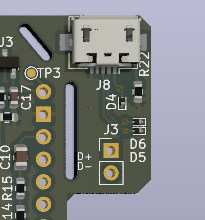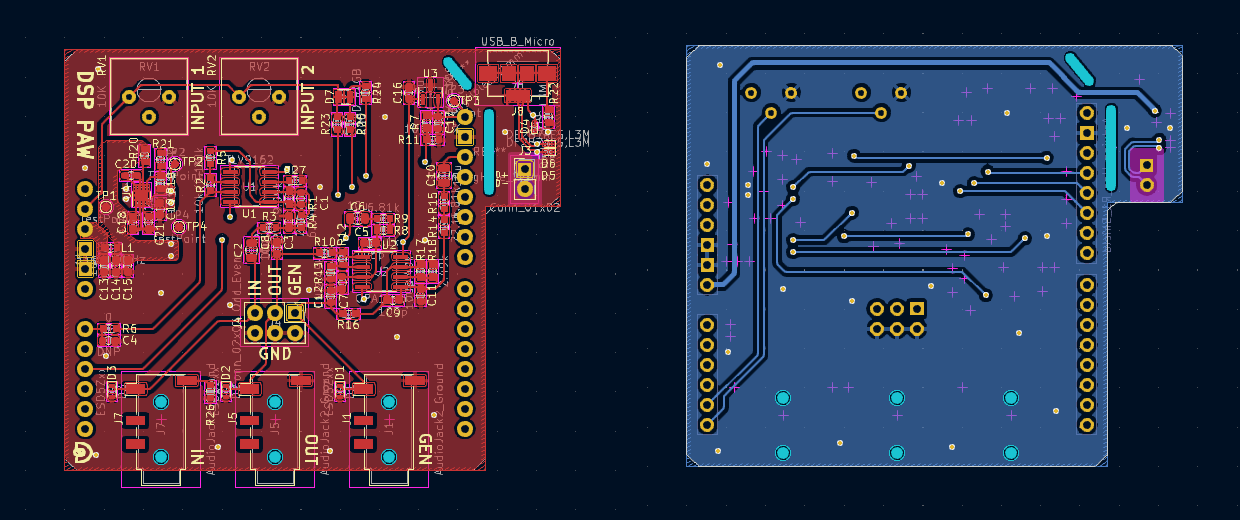Layout of the new add-on board is complete. I should note that the schematic and board layout are being done with the open-source electronics design suite KiCad. This is my first "real" design using KiCad, and the process has gone a lot smoother than I anticipated. There is a large community available for support, plenty of component libraries available, and even some one-click gerber generation plugins for PCB prototype manufacturers for easy order quoting. It's my personal recommendation to learn KiCad if you are in need of circuit design software.
Change to Arduino footprint
A significant design change was made during the process of layout which is important to cover first: the board is now based on the common Arduino header format rather than the “ST Morpho” format used by STM NUCLEO development boards. This change greatly expands the compatibility of this board with other microcontroller development boards with no practical compromise. The layout process revealed that nearly all connections are either routed through or could be substituted with pins on the Arduino header of the NUCLEO board.
The exception is the pair of USB data pins. Since these are near a corner of the board, the USB circuitry was moved to be contained in that corner. Since this is a NUCLEO-specific requirement, cut-outs were made to allow removing this portion of the board for development boards that do not require it:

Layout process and results
The layout could have been done with either two or four copper layers. The four-layer option would allow for two internal copper layers, where typically one carries a ground plane and the other carries DC power traces. Isolation of power traces and insulation of signal traces through the ground plane would minimize the possibly of induced signal noise, although with the drawback of increased manufacturing cost. Additionally, that level of care for signal quality is not quite necessary for the intended applications of this board. Since board design was achievable with two layers, the two-layer approach was taken.
All components were kept on the top layer of the board. Available board space allowed for this, but it also simplifies board manufacturing. Prototype PCB assembly services typically only offer component placement on one side of the board; in this case, that means only the Arduino and USB pin headers need to be soldered by hand after delivery.

Both layers were filled with ground pours (i.e. spreads of grounded copper) to surround the traces and minimize the potential transfer of noise between them. Other common techniques were employed in the design: components like decoupling capacitors were kept near their sources, application notes were followed for the four ICs circuits and layout, and some consistency was made on trace directionality (top layer prefers north-south paths, bottom layer prefers east-west). Power circuits were kept away from the analog circuit paths where possible. Ground vias were spread throughout the board to ensure consistent grounding. And finally, KiCad’s electrical and design rule checks were used to confirm a sound design.
A nice 3D rendering
KiCad also features the ability to create 3D models of circuit board designs, and so I’ve done that for the add-on board:

The board is 63mm at its widest, and 53.5mm in length. The previous NUCLEO-based design was 70x55mm; fortunately, the reduction in board size was manageable.
Design files are open source
The new add-on board design is released under the CERN Open Hardware Licence Version 2 - Strongly Reciprocal license, a license made specifically for open hardware. I am also working on a new source repository for DSP PAW which contains all of the project's firmware, software, and hardware files. It is hosted on both my personal server and on GitHub. The KiCad project files can be found here. PDF versions of the schematic and fabrication drawing will be made available by the time the prototype batch of these boards is ordered.
 Clyne
Clyne
Discussions
Become a Hackaday.io Member
Create an account to leave a comment. Already have an account? Log In.